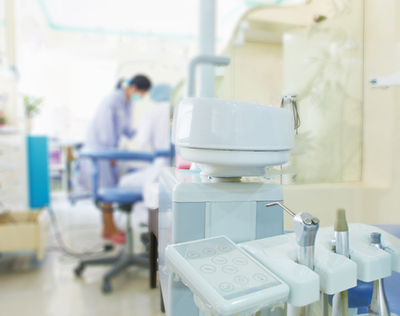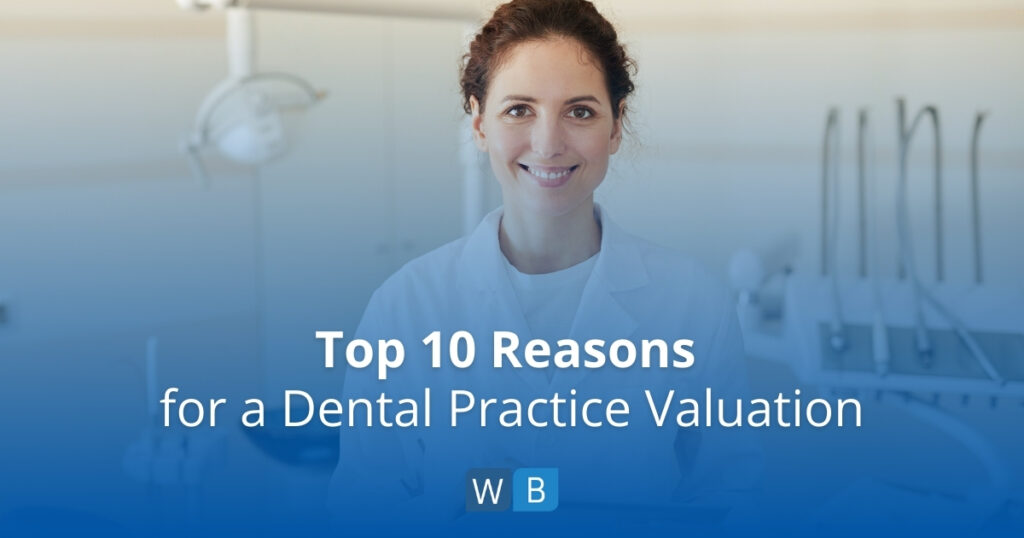
Dentists (sellers and purchasers), bankers, and brokers all want to know the value of the dental practice in preparation for a transition. Many dentists want to know if there is a down-and-dirty short cut using a simple formula to determine practice valuations.
Dentists have heard or read about the price-to-gross ratio (the percentage of the sales price to the gross annual collections), and want to know what the percentage number is for determining the value of their practices.
In reality, I have seen price-to-gross ratios for dental practices range from 0% (yes, that is zero percent) to over 125% of gross annual collections. You may ask how you could have a price-to-gross ratio of zero. Actually, this happens more often than you’d think. There are quite a few practices that never sell, resulting in a price-to-gross ratio of 0%. You are also probably wondering how there could be such a wide range for the price-to-gross ratio. The wide range for the price-to-gross ratio is because there are numerous considerations that go into a properly valued practice to arrive at a sales price between the seller and purchaser. Over the years, dentistry has changed dramatically to adapt to the changes. The valuation process has become much more scientific, refined, and extensive.
Very seldom does a dentist tell me he or she has an average practice. As a matter of fact, as I visit with dentists, I’m told of all the unique and valuable features of their practices. (Now remember, the attributes and values of a dental practice are often quite different in the eye of the seller versus the eye of the purchaser.) Every dental practice is distinct, and no one formula or method is the single defining approach to valuation.
You may ask where we’re going with this. If there are very few average dental practices, why would you want to use the average range of the price-to-gross ratio to determine practice values? Without a comprehensive understanding of practice valuations and market comparables, dentists are not aware that the average price-to-gross ratio is 40% to 90% of annual collections. As you can see, this is too broad a range to throw your practice into the average bucket and apply an average price-to-gross ratio.
One of the many problems with this formula arises when two very different practices that produce similar annual collections are compared and the values of the practices are significantly different. The rule of thumb formula described here would not take into consideration any of the details, factors, or differences of the practice and would look only at the annual collections and ignore all other factors. Just as you cannot see the foundation of a home, without the details of the practice you cannot have a thorough understanding and appreciation for the total picture of the practice. The answer to practice valuations lies in the details. Using a price-to-gross ratio gives an incomplete picture of the practice. For sellers, you may be leaving money on the table, and for purchasers, you may be overpaying for the practice. The only way to know the practice and arrive at the value is to have a thorough and comprehensive valuation performed.
Bankers have a very specific formula they use to start the valuation process, and I assure you they do not apply a simplistic price-to-gross ratio to arrive at valuation. Valuing a dental practice using only gross revenue as the primary criterion of value does not make good business sense. Bankers need to make sure the loan they make will be repaid; therefore, they start the appraisal process analyzing the cash flow of the practice. The excess earnings in the practice are what drive value in the practice.
Next, the bank analyzes the risk of success versus the risk of failure of the transition. Many details are taken into consideration to make this assessment. The value of the dental practice is comprised of two primary types of assets-tangible assets and intangible assets. The value of the dental practice generally significantly exceeds the value of the tangible assets of the practice (such as dental and office equipment, furniture, supplies, etc.), resulting in the bank’s loan not being fully collateralized. Bank recovery in the event of default of the practice loan is severely jeopardized because of the large percentage of intangible assets, such as goodwill, in dental practices. Banks have learned how to properly evaluate a practice by taking into consideration the cash flow and many other factors in valuing a practice. The bank’s experience demonstrates dental practice loans have a very low default rate. In today’s finance environment, properly valued dental practices are eligible for 100% financing of the sales price of the practice.
With the advent of banks financing 100% of the sales price of practice acquisitions, banks have a significant impact on the valuation of dental practices. Banks are much more than just lenders; they send a message to the industry (sellers and purchasers) of the value they place on dental practices by the amount they will loan a purchaser. When a practice valuation is not properly and accurately performed, the bank will not make a loan for 100% of the sales price, and the bank sends a message questioning the credibility of the sales price.
Once the credibility of the valuation of the practice is questioned, there is a breakdown in trust, and the transition process undergoes an immense amount of strain and contention between the parties. The time it takes to sell the practice is increased exponentially. The seller may be undermined in what he or she expected to be the return from the sale. The chance for practice transition failure is greatly increased when the valuation is faulty. An accurate practice valuation facilitates the transition process because the seller and purchaser negotiations are much more transparent and trustworthy.
A properly trained and experienced dental practice appraiser/broker takes into consideration all of the methodologies and considerations discussed here and more. Appraisers/brokers have learned over their careers that the sales price and fair market value of a dental practice is the price that a practice would sell for on the open market. It is the price that would be agreed upon between a willing purchaser and a willing seller, with neither being required to act, with the practice being on the open market for a reasonable period of time, and with both having reasonable knowledge of the relevant facts.
If there are restrictions on the practice, the fair market value must reflect these considerations. Experienced dental practice appraisers/brokers will know their market, will have tracked years of dental practice sales, and will have portfolios of practice sales statistics better known as the market comparable values, much like you see in the real estate industry using market comparables. Not only must appraisers/brokers take into consideration the current market comparables, cash flow and income methodologies, with the proper adjustments to the net income for discretionary expenses in calculating the valuation, but there are numerous other considerations taken in the valuation process. There is not enough room in this article to identify the numerous bullet points of what is considered in a practice valuation. Look for our sequel article, “Dental practice valuation considerations below the surface unplugged.”
Jeremy Brown, JD, earned his law degree from Texas A&M University and completed his undergraduate studies at Brigham Young University. Mr. Brown joined ADS Watson, Brown & Associates in 2008 and specializes in practice appraisals and brokerage. He can be reached at (469) 222-3200 or jeremy@watsonbrownsales.com.
Frank J. Brown, JD, LLM, (taxation) received his master of laws in taxation from Southern Methodist University and his juris doctor from the University of Arkansas. Mr. Brown is licensed in Texas and Arizona and is the past president of ADS Dental Transitions. He can be reached at the firm of ADS Watson, Brown & Associates, (469) 222-3200 orfrank@watsonbrownsales.com.



